Why are people saying these works of art are 'stolen'?
- Published
- comments
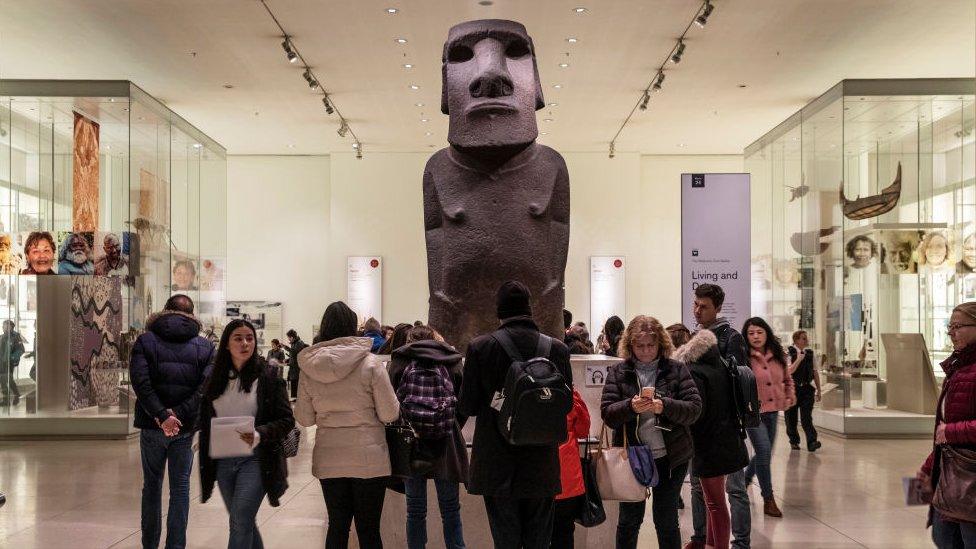
Should we return the Easter Island heads in the British Museum?
The Benin Bronzes, the Parthenon Marbles and the Easter Island heads - they've been on display in museums for years, so why is everyone talking about them now?
The truth is that many of the pieces currently on display in British museums have controversial stories behind how they were brought to the UK.
Is it right for Britain to continue to look after the art in our museums, or should they be returned to the places they came from?
We want you to decide.
Play our game to find out the stories behind the museum pieces and comment below with your thoughts.
Why is everyone talking about this now?
The reason that this story is in the news is because lots of people have been asking for art to be returned to the countries they originally came from.
One of the most famous examples of this are the Parthenon Marbles,also sometimes called the Elgin Marbles.
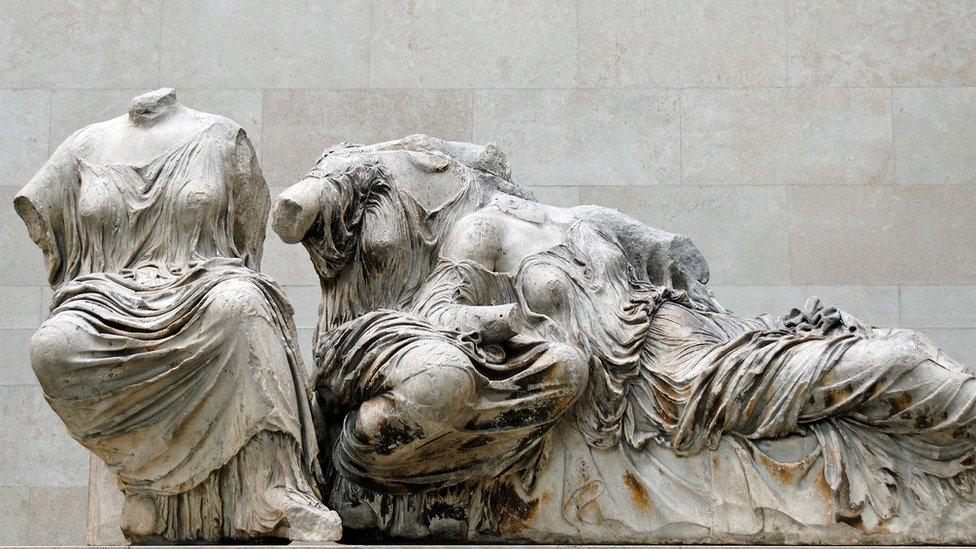
The Parthenon Marbles are one of the British Museum's biggest attractions - but some argue that they do not have the right to display them
In the 19th century, hundreds of marbles from the Parthenon - a famous Greek temple built nearly 2,500 years ago - were taken by a British man named Lord Elgin.
The marbles were incredibly well-received in Britain and continue to be a popular exhibit in the British Museum today.
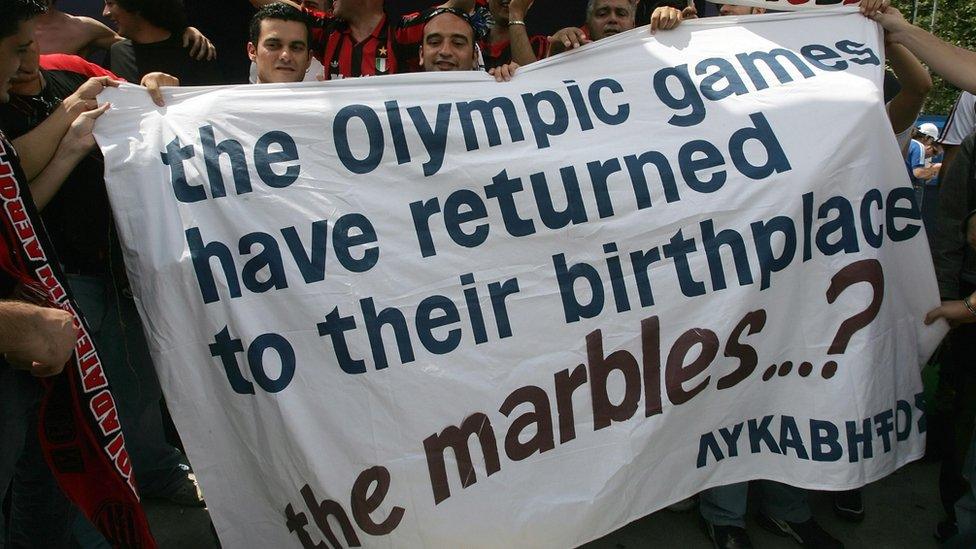
AC Milan fans, during a 2007 game with Liverpool, hold up a banner asking why the Parthenon Marbles have not been returned to Greece
But many people remain shocked at the way the marbles were taken.
They feel that the marbles were not lawfully given to Lord Elgin, and that they should be returned to the Parthenon in Greece.
Losing their heads?
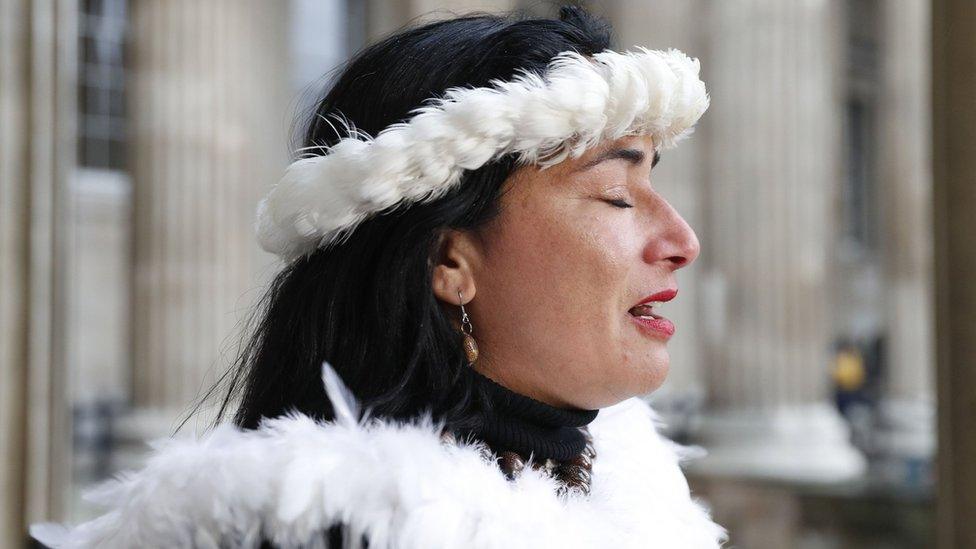
The people of Easter Island feel they are spiritually connected to the moai statues in the British Museum
More recently there has been debate over the two Easter Island heads that are on display in the British Museum.
The people of Rapa Nui, where the heads (called moai) were taken from, believe that the heads do not belong in Britain.
They claim to feel spiritually attached to the statues, which were taken from the island in the 19th century by British sailor Richard Powell and presented as a gift to Queen Victoria.
You have our soul...
Benin bronzes
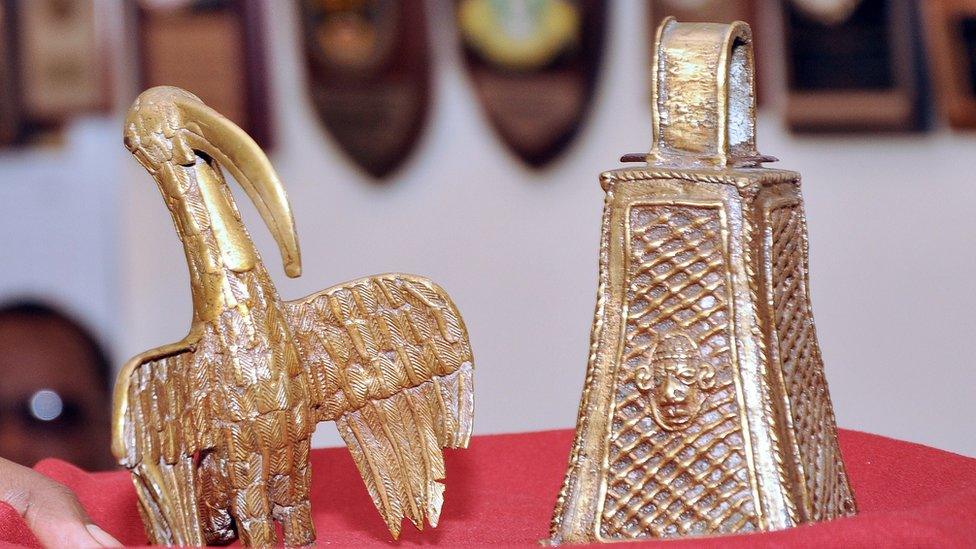
Examples of Benin art which was looted by British soldiers in the 19th century. These pieces were returned to Nigeria in 2014.
This week, French president Emmanuel Macron has announced that he plans on returning 26 works of art to the Republic of Benin, Africa, which were originally taken during wars in the 19th century.
Britain currently has hundreds of pieces of art, known as Benin Bronzes, that were taken during a war with the Kingdom of Benin (now part of Nigeria).
After calls for their return to Nigeria, the British Museum (which holds nearly 700 Benin Bronzes) are discussing loaning these works back to Nigeria.
Why were so many works of art taken?
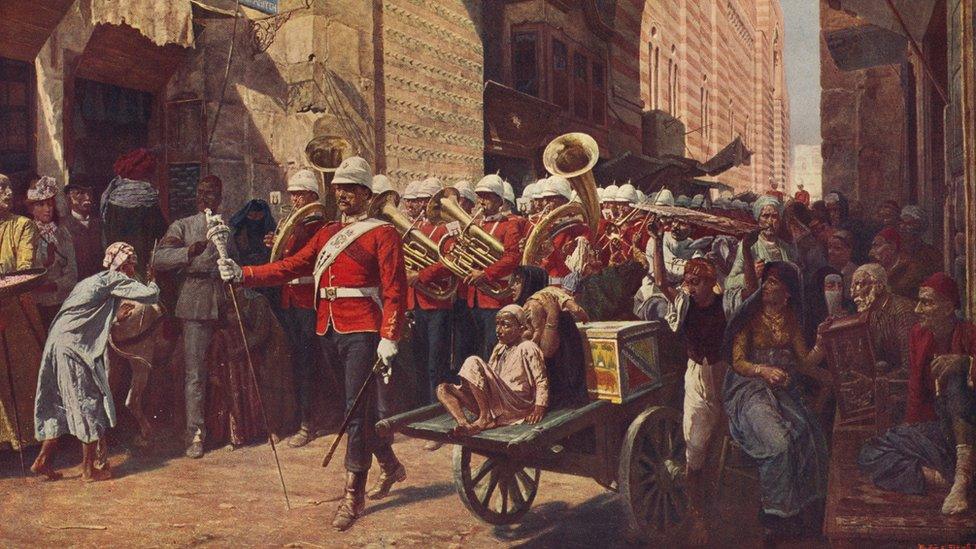
Britain looked to expand their power in the 19th century by taking over foreign countries, this is called colonisation.
At this point you might have noticed a trend in when all these artefacts were taken - the 19th century.
This was a period of huge change for the world - an era in which rich and technologically advanced countries like Britain, France and Portugal wanted to expand their empires by invading other countries and taking control of their resources.
This is called colonialism. At the time, many Britons saw their presence in other countries as a positive thing - they thought it was helping their economy and that the countries would benefit from adopting British customs.
But history often sees this period as an era of brutality, because many of these countries and their people were exploited and persecuted by the colonial rulers.
What are the arguments for keeping the art?
British museums which display art taken during the colonial era argue that there are good reasons for keeping many of these works in the UK.
They say that the art is well protected and cared for in our museums, and that these pieces allow people to appreciate works of countries and cultures they might not ever have been able to experience.
Furthermore, some argue that if every country claimed their works of art back, there would be very few things left to see in the museums.
Some say the stories behind the art are part of the display, and former colonial countries should not hide from their history.
If you say yes to one you suddenly find the British Museum would be empty.
What are the arguments for returning the art?
There is not much evidence that the art was taken with permission.
Some would argue the right thing to do is to return the art from where it was taken.
They also suggest that there is more value in seeing the art in the countries in which it was made.
The British taking the moai from our island is like me going into your house and taking your grandfather to display in my living room...
We want to know what you think.
- Published27 October 2018
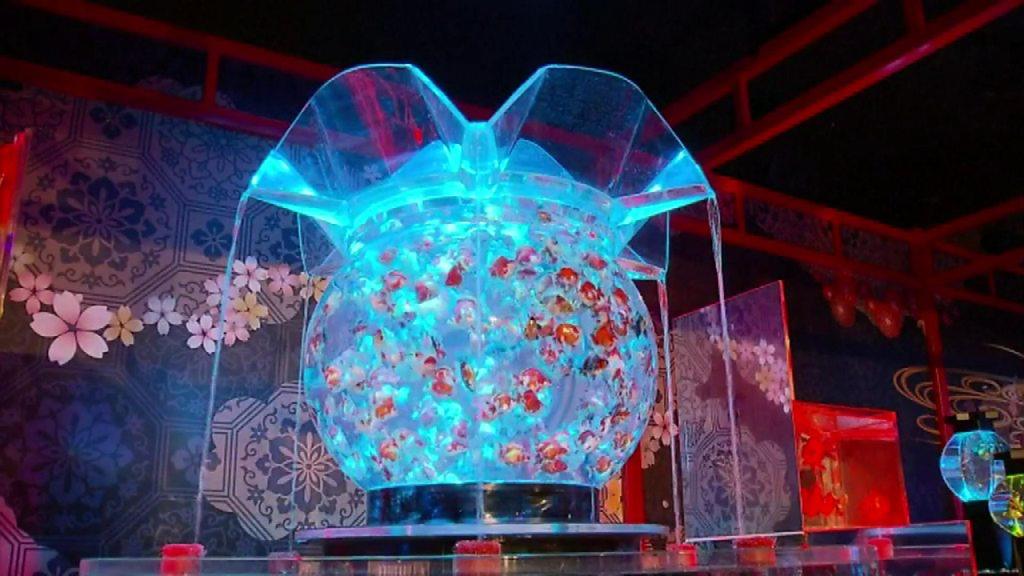
- Published25 November 2018
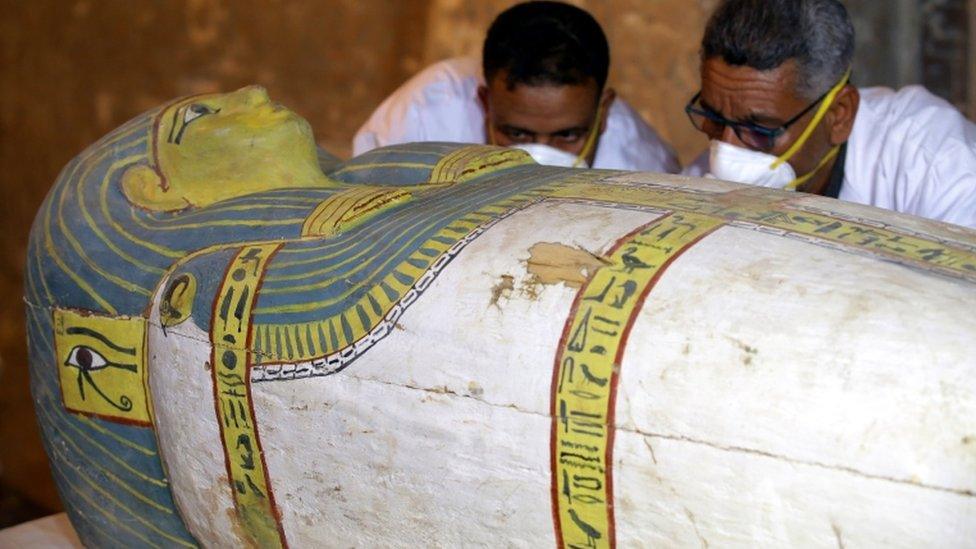
- Published13 September 2018
